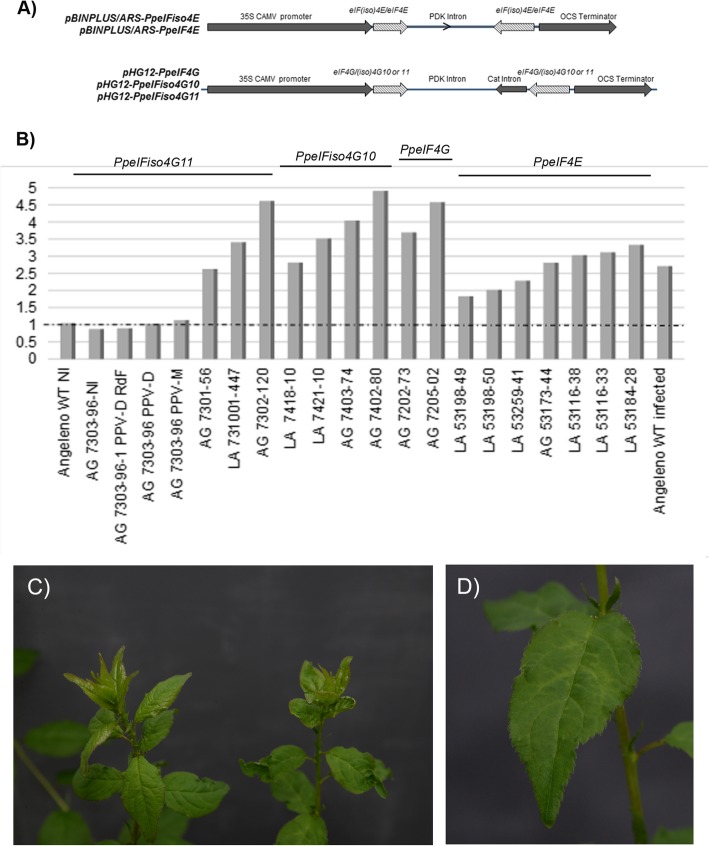Fig. 1.
Production and sharka resistance of transgenic Japanese plum lines. a Schematic representation of the RNAi constructs used for Japanese plum transformation. PCR fragments of PpeIF4E, PpeIFiso4E, PpeIF4G, PpeIFiso4G10, and PpeIFiso4G11 were cloned in opposite orientations as indicated by hatched arrows. b Assessment of resistance to PPV infection. Values represent the mean optical density values of three to four replicates per transgenic line tested for PPV infection over 3 to 5 vegetative cycles. Dotted line shows the basal OD value of the healthy negative control (‘Angeleno’). AG: ‘Angeleno’ transgenic lines; LA: ‘Larry Ann’ transgenic lines. Numbers starting with 73 were transformed with pH 12-PpeIFiso4G11; 74 with pH 12-PpeIFiso4G10; 72 with pH 12-PpeIF4G and 53 with pBINPLUS/ARS-PpeIF4E. All plants were grafted on rootstocks infected with PPV-M except NI (non-infected) and the plants noted PPV-D (PPV-D8 and PPV-D RdF Rouge de Fournés isolates). c Absence of symptoms on PpeIFiso4G11-silenced (left) and PPV symptoms on infected wild-type ‘Angeleno’ (right) Japanese plums. The susceptible plant on the right shows wilting of the bud leaves. d Close-up of PPV-infected ‘Angeleno’ leaf displaying chlorotic symptoms and vein clearing

